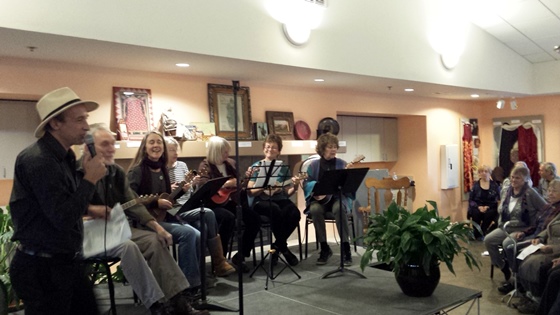— from Michael Riordan —

In view of the recent upsurge in coronavirus cases throughout the Western United States, it would be foolhardy for the County to proceed further with plans to reopen the San Juan Islands to visitors from the mainland. According to the official New York Times database this morning, there was a 76 percent increase (!) in new cases nationally during the past two weeks — occurring largely in the South and West — with Arizona, Florida and Texas hitting new all-time highs. We are in a completely new phase of the pandemic.
Our neighbor states Oregon and Idaho have paused in their reopening plans due to the upsurges in recent weeks. And in California, from which many island visitors come, due to its large population, the governor has ordered bars and nightspots to be closed in seven counties (including Los Angeles), backtracking on the state’s reopening plans.
Closer to home, Washington state cases have recently exceeded 500 a day, versus about half that in May. We also experienced a 5.3 percent “positivity rating” during the past week, according to the Johns Hopkins Covid-19 database; that’s the ratio of positive cases to total tests, a key measure of how well the state is doing in fighting the virus. For comparison, San Juan County’s overall positivity rating is an exceedingly good 1 percent.
Even closer to home, Skagit County has witnessed an upsurge in positivity ratings recorded at its drive-through testing center at Skagit Valley Community College, which I follow religiously. From a late-May low of less than 0.3 percent, it has ballooned to 2.5 percent during the last two weeks. As that facility is open to almost all comers, this figure likely gives a good measure of the level of virus infections in that county — which many
of us visit regularly to shop and stock up on bulk supplies (as will some visitors).
Another stab at the Western Washington infection rate is a June 25 analysis of King, Pierce and Snohomish counties just published by the WA Department of Health (and reported in Orcas Issues on Sunday evening). That report gives numbers like 0.1 to 0.2 percent in mid-June but rising rather alarmingly.
What do all these numbers portend for San Juan County? According to a 2018 study of summer visitors, we can expect an average 6,000 arriving per day, with about 2,000 coming to Orcas Island. Lets say for argument that 1 percent of these visitors are infectious. Then we can expect about 60 active coronavirus carriers per day arriving in the islands, and 20 on Orcas Island. If we instead use only half the number of visitors, which is reasonable this summer (especially if the county does not proceed to Phase 3), then the number of carriers will be cut in half, too. And if we use the lowest reasonable infection rate of 0.2 percent, that’s still two new active carriers per day on Orcas Island.
The obvious danger is that one or more of these active Covid-19 carriers will infect islanders, despite all the commendable efforts to preclude that happening. We cross paths with tourists in many places — for example, in restaurants and Island Market and on the trails at Moran State Park. Any infections will probably not be known until after the visitor(s) leaves — making contact tracing difficult to impossible. Such infections will place a tremendous burden on the County Health Department and island medical
services. A few cases may be manageable, but not dozens of them.
We have so far been fortunate to avoid the outbreaks that have been occurring on the mainland, thanks to the diligence of County Health Officer Frank James and all the community-minded efforts of individual islanders and businesses. Community spread of the virus has not happened here. But this success means that the vast majority of islanders remain susceptible; we are like dry woodlands awaiting a spark to ignite a forest fire.
This is of extreme concern for the 34 percent of islanders over age 65 (including yours truly) — about 1,500 year-round Orcas Island residents — for whom the Covid-19 pandemic is a life-and-death matter. Washington state statistics indicate that about 90 percent of deaths are occurring among citizens age 60 and older. We are the driest of the dry wood.
Therefore prudence dictates that the county reopening remain at Phase 2 well into July and possibly for the remainder of the summer, until the coronavirus upsurges abate on the mainland. That will still allow a modest level of tourist activity, one that we may be able to cope with, while trying to protect the lives of the most vulnerable citizens.
It’s time to hit the Pause button.
Michael Riordan writes about science, technology and public policy from his home in Eastsound.








Thank you Michael! I agree it seems foolish to have mainlanders arriving in large numbers as the new cases of the virus accelerate. States that opened early are now backtracking after dramatic increases in infections.
Sound logic. Let’s make it so, County Council. To press forward toward fuller reopening contrary to such logic would be just…unforgivable.
s
Michael’s quick statistical analysis nails it: two to twenty COVID-infected visitors PER DAY arriving on Orcas. On a walk around Cascade Lake Sunday, the park was as crowded as at any time any other year. While many people wore masks and maintained a respectful distance, I saw lots of big party-groups of teenagers, no masks no distance. And we’re hoping to re-open schools in the fall? And Phase 3? Strikes me this is the old tortoise and the hare story: slow but steady wins the race.
Thank you Michael. I sincerely hope that the County Council reverses their decision. We are on the fifth day in row of breaking records for the most new cases in a single day in this country. The Visitor’s Bureau has been advertising for people to come here. They will come, and we will pay the price. The employees who work in the shops and restaurants are at the greatest risk as they will encounter 100s of new people each day.
Son and granddaughter went to the lake today and came back disappointed unable to have any summer fun. They reported the place was packed and only two other masked people aside from them. But what can we local citizens do to stop people coming here?
Thank you for posting the information. I also follow the data you mentioned, and agree with you.
Meanwhile- our sister county has been testing all island residents over 18 yrs. of age free of charge… for over a month.
For immediate release
STATEMENT REGARDING COVID-19 TESTING
(CORONAVIRUS)
Island County, May 15, 2020:
Island County Public Health, WhidbeyHealth, and a variety of other community partners are working together to test a large number of Island County residents for COVID-19. Communitywide testing started Wednesday, May 13, 2020.
Due to an overwhelming response to the testing survey, Island County will open COVID-19 testing on Monday, May 18 to all Island County residents 18 years of age or older, regardless of survey completion or pre-registration status. There will be no out-of-pocket cost for this viral PCR test, but insurance information will be collected if available. Please bring identification to be tested. Below are the testing dates, locations, and hours.
DATE LOCATION HOURS
MONDAY, MAY 18 Oak Harbor High School 11am – 7pm
TUESDAY, MAY 19 Oak Harbor High School 11am – 7pm
WEDNESDAY, MAY 20 Oak Harbor High School 11am – 7pm
WEDNESDAY, MAY 20 Utsalady Elementary, Camano Island 3pm 8pm
THURSDAY, MAY 21 South Whidbey High School 11am – 7pm
Governor Inslee recently outlined his Safe Start plan to reopen Washington State, which includes better access to testing and improved data on the number of people with COVID-19.
Community-wide testing is one vital piece of reopening Island County and Washington State.
For additional information:
Island County Public Health – http://www.islandcountywa.gov/Health/Pages/COVID-19.aspx
Call Center # 360.678.2301, Mondays through Fridays (8:00am – 4:30pm), Saturdays and Sundays (9:00am – 4:00pm)
WA State Coronavirus Response (COVID-19) – https://coronavirus.wa.gov/
You give a fact-based foundation for a conclusion that I merely intuit. Thank you, Michael.
Should the county move to Phase 3? No. We would be out of our minds to go on to this level. NO, NO, NO.
Thank you for stating the facts. We appreciate your insight and comments.
I’m pleased by the unanimity and thoughtfulness of the comments so far on my article. In fact, two of the commenters took admirable precautions after returning to the island — one after having to return abruptly from Europe in March — by self-quarantining for two weeks. This is what I mean by the community mindfulness that is a good part of the reason we have not had a major outbreak and may even have eliminated the virus here.
But can we expect the same behavior from our summer visitors? Absolutely NOT!
Just tried to get a reservation for an off island shopping trip and ferry schedule is book solid through Saturday from Anacortes to Orcas, It going to be a bad tourist weekend, as if it isn’t already.
I also isolated myself for two weeks after a doctor’s appointment in Seattle a couple of months ago. It’s the right thing to do.
As an older type 1 diabetic, I am in that high risk group. I have not been in a store since late February. Since then, I have spent time with probably a dozen people or so. No more than two at a time and all outside. If we foolishly move into Phase III right now, I will further isolate myself to remain safe and healthy.
Why is SJC mixing the 300 anti-body tests that Dr. House performed in April in with the regular county case count of swab tests? The state health department was ordered to quit doing this because it gives a false record of the percentage of actual positives compared to the overall count.
Why is the U. of W. testing labs no longer reporting the number of negative tests that are performed for the San Juans? Leaving out this figure obscures the numbers needed in figuring the percentage of overall test result numbers compared to population.
Why did the county council recently opt to quit reading the letters of people who have submitted public comment at the council meetings? The very reason they do so is to make sure their comments are put on the public record, and equally important to ensure that their concerns and their comments are actually heard.
San Juan County Council Agenda
TUESDAY
JUNE 9, 2020
COUNCIL REGULAR MEETING
PUBLIC ACCESS TIME: emails will be distributed, but not read aloud going forward.
8:22 Rick Hughes— “At this point we have public comment access time. Ingrid, we’ve decided not to read emails, comments will be distributed to council and put on record.”
Like the well written opinion above i do not see how moving to phase three would be anything but a disaster. Even with mr inslee requiring people to wear masks in all public places now, it seems no one is. I too havent been able to go to parks or beaches because of the overwhelming number of unmasked visitors. We are not ready.
I emailed this Orcas Issues post, together with the first eight comments, directly to Rick, Jamie and Bill yesterday evening. Guess it didn’t register.
If *testing* can reveal a case prior to active symptoms…with results in say, 5 minutes, I’d love to see people tested at the ferry parking lot in Anacortes..
Rick– during last week’s Health and Community Services meeting it was reported that, “Total number of people tested in the county to date = 1459”.
Yet the weekly data count offered to the public via the SJC Readiness Dashboard says a total of 1760 tests have been administered. This is a difference of 301 tests.
Both listening to the audio of recent county council meetings, and last week’s H&CS report indicates that Dr. House’s 300 anti-body tests have been included (have been added into) the SJC case count. Is this the reason for this discrepancy? If so, which numbers are you sending to the state when you apply for upgrading to Phase 3?
As we know both types of tests have their place, but the state was ordered to stop mixing the two sets of numbers. The state dashboard was supposed to display negative molecular tests (which detect an active coronavirus infection), but accidentally also included negative antibody tests (which show whether a person has been exposed at some point in the past). Combining the two very different set of numbers only serves to inflate the number of negative tests per positive results underestimating the percentage of all test results that were positive. It also undermines the accuracy of figuring the percentage of the population tested, and undermines the ability to track trends related to the disease.
Again, the state was ordered to stop doing this… why is SJC still doing this?
Also, can you explain why the new ruling mandating that the Univ. of Wa. testing facility no longer report ANY negative test results to SJC is in effect? Lacking these numbers only serves to undermine the same accounting principles.
Also, during the 6/09 meeting the H&CS director stated that, “SJC and all the counties in our region are meeting all of the state’s goals/metrics.” Though SJC and all the other counties in our region are ALMOST meeting all of the state’s goals/metrics- those that are following the numbers, and reviewing the criteria know that this was not an entirely accurate statement then… and it’s not entirely accurate now.
Could not agree more
To back up Brian Weise’s comments, when I walked the Cascade Lake trail late Sunday afternoon, the bridge was chockablock with unmasked, no-social-distancing, mostly young folk loitering, chatting, jumping off the bridge. Where’s enforcement of the Governor’s and Frank Jame’s orders to wear masks and social distance even outdoors? At the least, the Park Service could post signs at the bridge banning loitering and jumping from the bridge during the pandemic.
Thank you, Michael. Couldn’t agree more. Tourism during a pandemic should be a non-starter. Instead of inviting the whole world here, we should be putting out PSA telling potential visitors that we are closed to outside guests. We should be hunkering down and focusing on keeping our own community members safe.